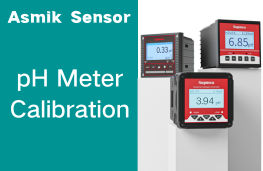pH Meter Calibration is a crucial process that ensures the accuracy of pH measurements, a fundamental parameter in various industries such as agriculture, food and beverage, water treatment, and scientific research. Accurate pH measurements are essential for quality control, experimentation, and research purposes. This guide will walk you through the ins and outs of pH meter calibration, from understanding the basics to performing the calibration process effectively.

In this section, we’ll delve into the foundational aspects of pH meter calibration.
pH, a measure of the acidity or alkalinity of a solution, plays a pivotal role in chemistry and various industries. It impacts chemical reactions, biological processes, and the overall quality of substances. The pH scale ranges from 0 to 14, with 7 being neutral, values below 7 indicating acidity, and values above 7 indicating alkalinity.
Calibrating a pH meter is akin to setting a reference point. Over time, pH meters can drift from their accurate readings due to factors like electrode wear, exposure to extreme conditions, or electronic interference. Calibration ensures that the pH meter provides precise and reliable measurements, preventing inaccuracies that could compromise experimental results, product quality, or research findings.
Now, let’s dive into the step-by-step process of calibrating a pH meter accurately.
Before initiating the calibration process, gather the necessary materials: pH buffer solutions (pH 4, 7, and 10), distilled water, clean containers, and a calibrated pH meter.
Begin by pouring small amounts of pH 4, 7, and 10 buffer solutions into separate containers. These solutions create calibration points.
Immerse the pH meter electrode into the pH 7 buffer solution. Allow the reading to stabilize and adjust the meter’s calibration if needed.
Repeat the process with the pH 4 and pH 10 buffer solutions. Calibrating at multiple points enhances accuracy across a broader pH range.
Some meters allow for slope and offset adjustments. Follow the manufacturer’s instructions to fine-tune the meter’s readings if required.
Thoroughly rinse the electrode with distilled water to prevent cross-contamination between buffer solutions. Cleanliness is key to accurate results.
After calibration, confirm the accuracy by measuring a known pH solution. If the reading is close to the expected value, your pH meter is calibrated successfully.
Here are answers to frequently asked questions about pH meter calibration.
Q1: How Often Should I Calibrate My pH Meter?
Calibration frequency depends on usage and conditions. For regular use, calibrate before each measurement session. In critical applications, calibrate daily.
Q2: Can I Use Any pH Buffer Solution?
Using high-quality pH buffer solutions is essential. Poor-quality solutions can lead to inaccurate calibrations and measurements.
Q3: What if My pH Meter Doesn’t Calibrate Properly?
If calibration fails, check the condition of the electrode, expiration dates of buffer solutions, and potential electronic interference. If issues persist, consider professional calibration or electrode replacement.
Q4: Can I Skip Calibrating at pH 7?
Calibrating at pH 7 is crucial as it’s considered neutral. Skipping it might lead to inaccurate readings across the entire pH scale.
Q5: Is Temperature Correction Necessary?
Temperature affects pH measurements. Some meters offer automatic temperature compensation, while others require manual adjustment. Follow the manufacturer’s recommendations.
Q6: How Long Will Calibrations Last?
Calibration stability varies. Factors like usage frequency and storage conditions influence calibration duration. Re-calibrate whenever you doubt the accuracy.
In this comprehensive guide, we’ve unraveled the intricacies of pH meter calibration. Maintaining accurate pH measurements is pivotal for industries and research alike. By following the step-by-step calibration process and heeding the provided insights, you’ll ensure consistent and reliable results for your experiments, products, or analyses.
Remember, the key to success lies in understanding the importance of calibration, following best practices, and employing quality materials. Keep your pH meter in top-notch condition, and you’ll unlock a world of precise and meaningful measurements.